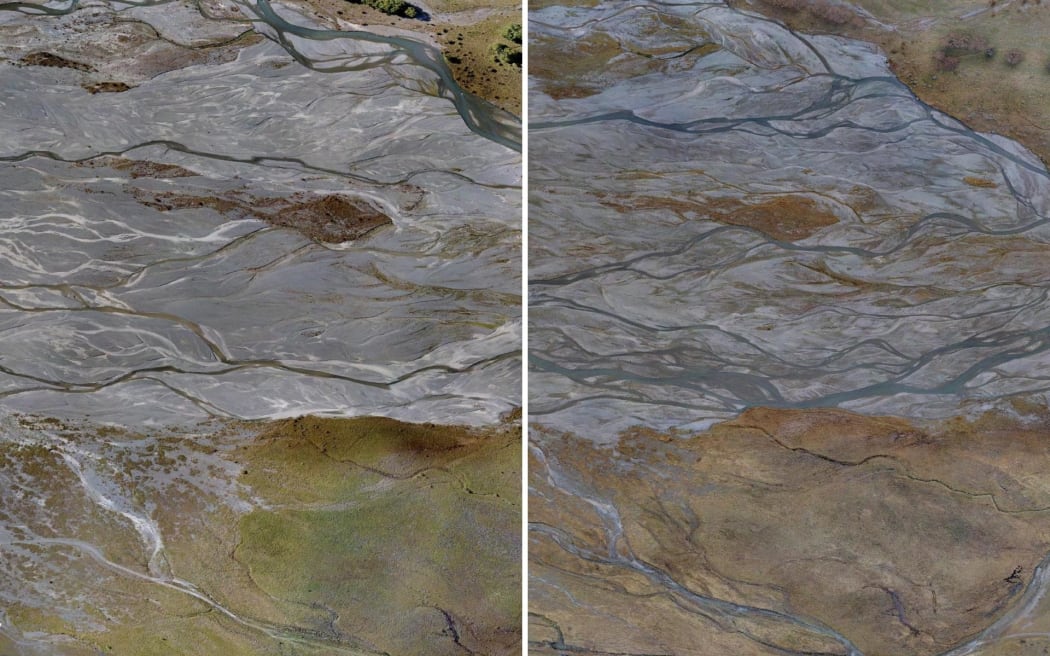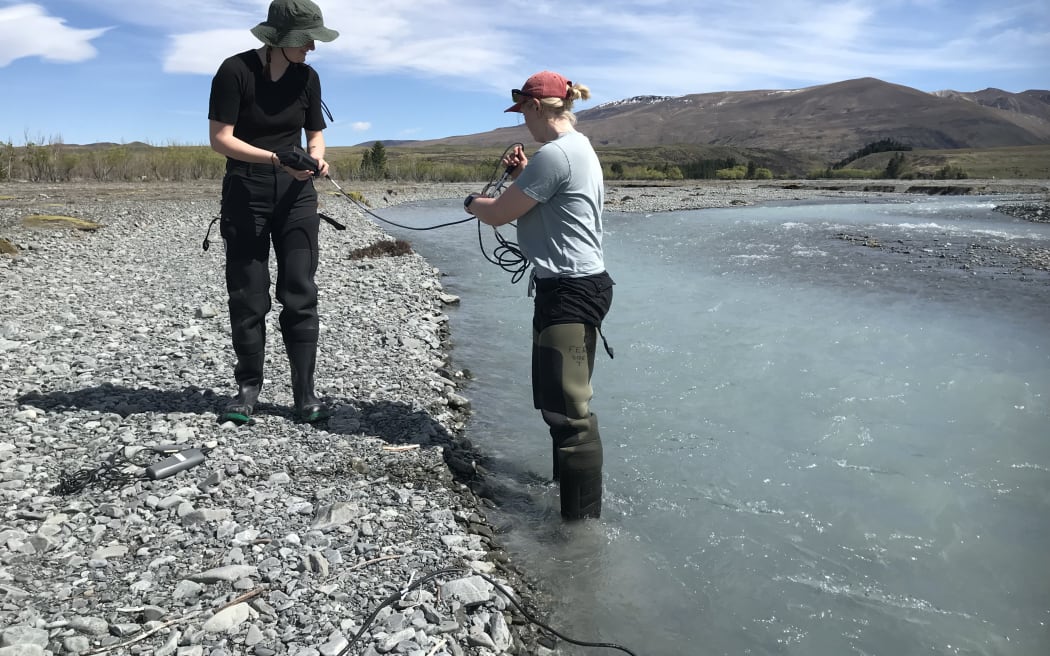In a braided river, shifting gravel and weaving water channels combine to create a complex and dynamic environment.
Worldwide, braided rivers are uncommon and in New Zealand, they're classed as naturally rare habitats.
While there are a few in the south of the North Island, most can be found in Te Waipounamu.
If you’ve flown over the South Island, you’ll have seen these silver, snaking rivers making their way from the Southern Alps to the ocean.

The same section of the Cass River in March (left) and June (right). Photo: Holly Harris
Follow Our Changing World on Apple Podcasts, Spotify, Stitcher, iHeartRADIO, Google Podcasts, RadioPublic or wherever you listen to your podcasts
Changing channels
Braided rivers contain springs that feed side streams, and water can flow through the gravel under the surface to pop up in other places. As the seasons change, floods wash out main braids and give life to side braids. The gravel shifts and the channels can change course. It’s an intricate dance that the creatures that live here have learned to adapt to.

Cass River near Tekapo. Photo: Claire Concannon / RNZ
Life and death
As in every ecosystem, in braided rivers there is an interconnected web of things eating other things. The freshwater invertebrates eat the algae that grow on settled river stones. The fish eat the invertebrates. The birds eat the fish, lizards and terrestrial invertebrates.
Holly Harris is a PhD student at the University of Canterbury. She wants to better understand the complex interplay between life in the river – how it is interconnected, and how it can move and adapt to the changing channels. She uses isotopic analysis of different species to investigate this.
Plus, she is taking quantitative measurements of the total river biomass across all types of channels to look at the overall stability of the system across time.
To do this Holly has to catch, count, measure and identify invertebrates and fish. She also takes bird counts of the endangered black-fronted terns, banded dotterels and wrybills that call the river home.
Claire Concannon joins her on one of her transects in the field to learn more.

PhD candidate Holly Harris and research assistant Zoe Hamilton prepare for a spot of electrofishing. Photo: Claire Concannon / RNZ
To learn more:
-
Listen to the full episode on Our Changing World


